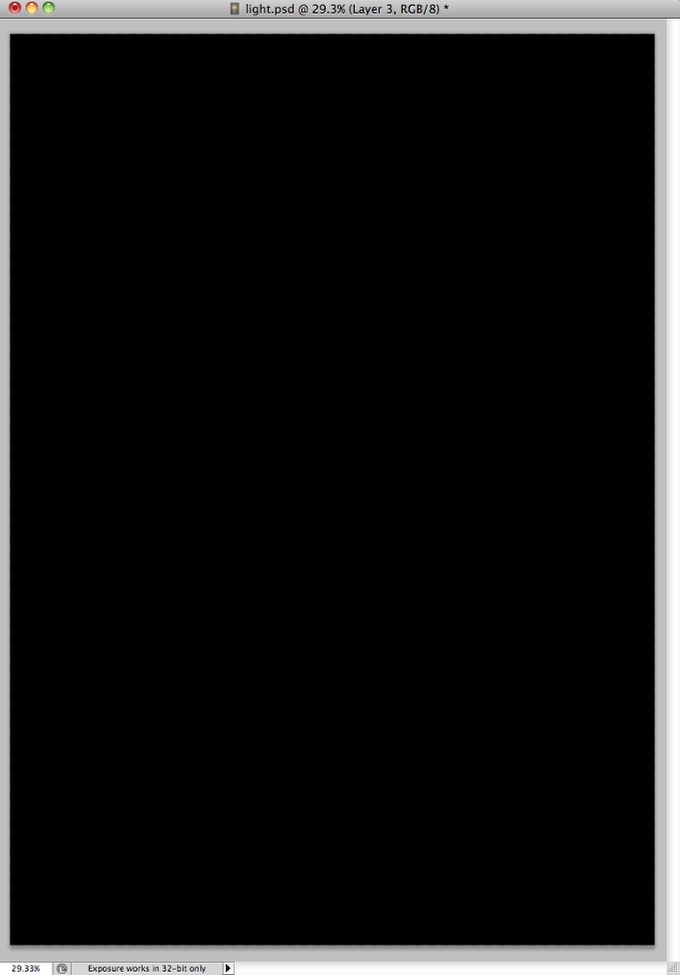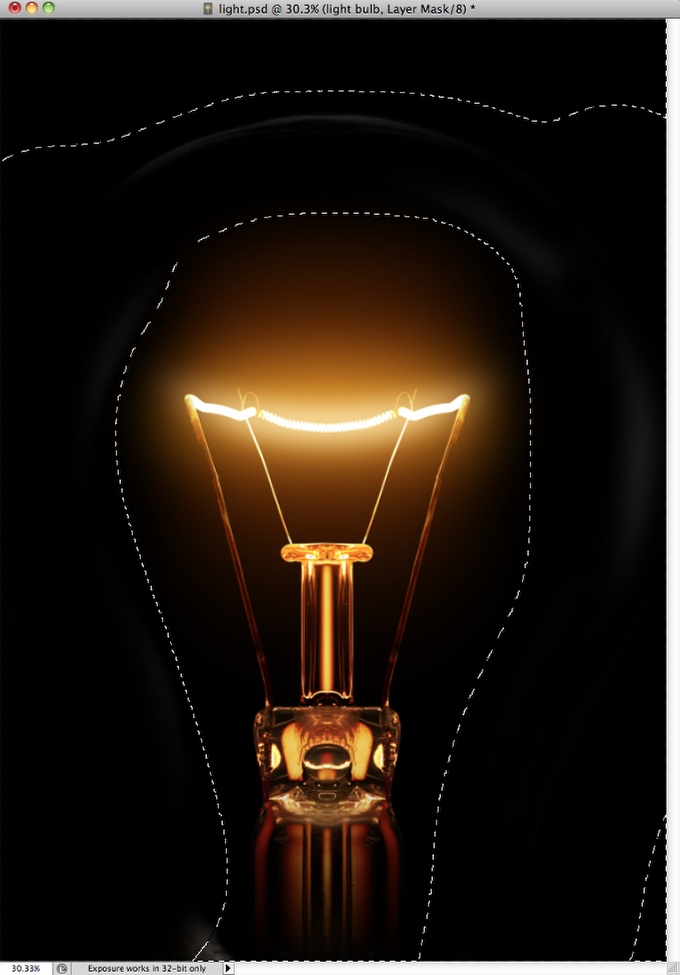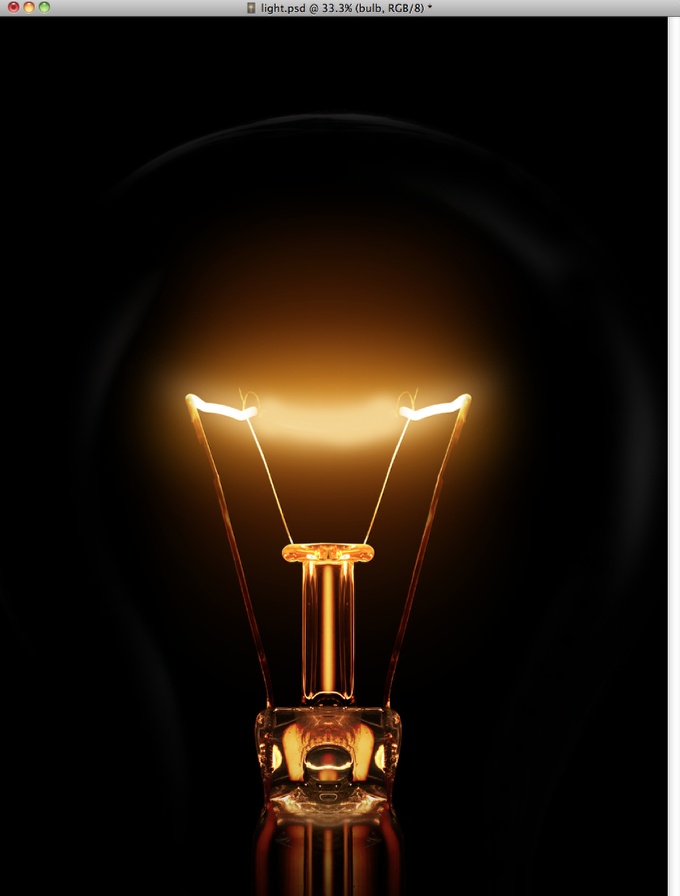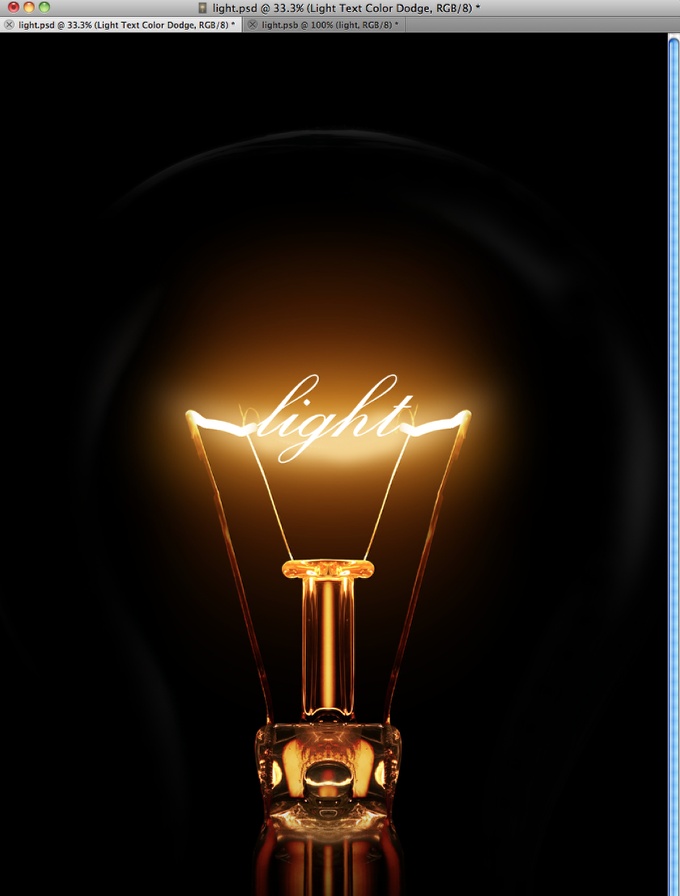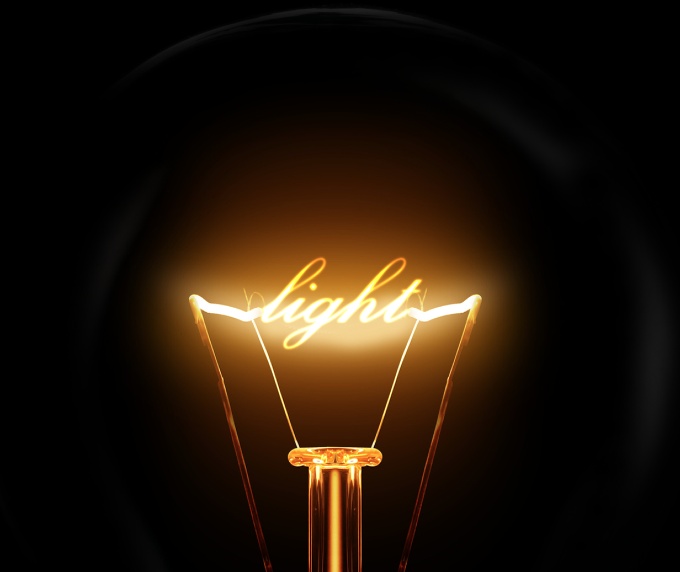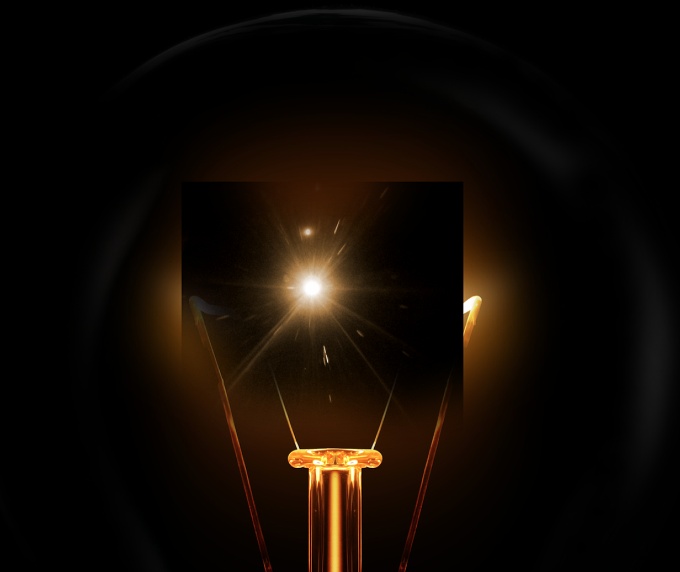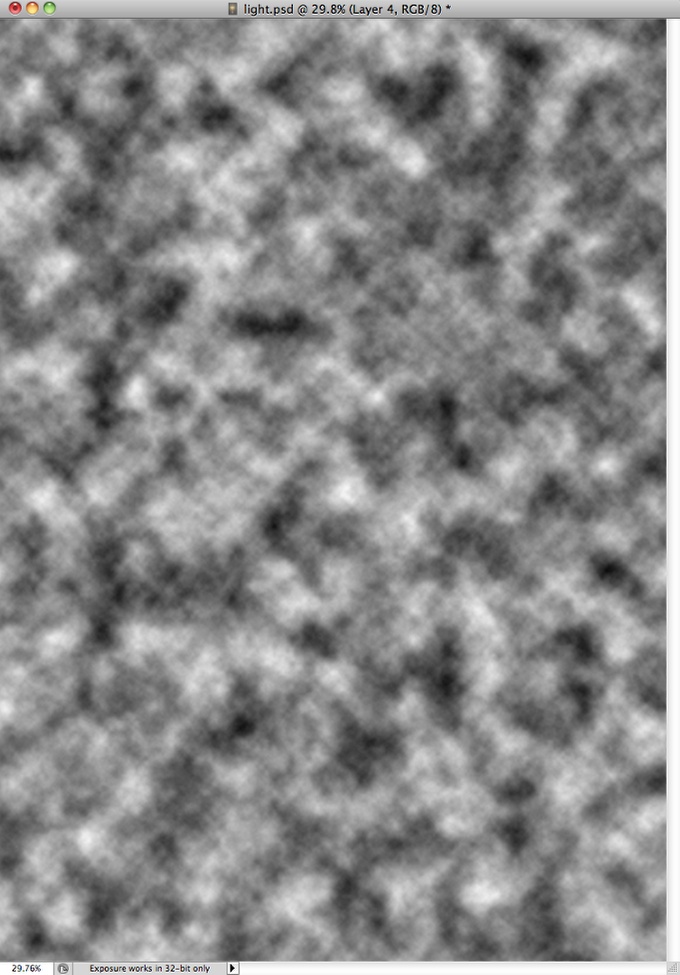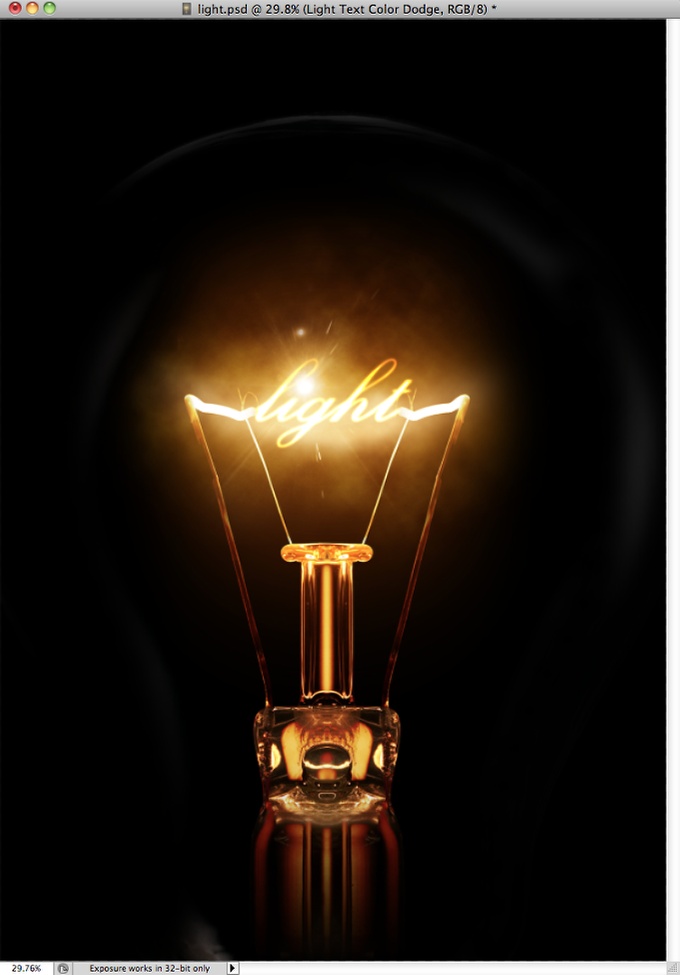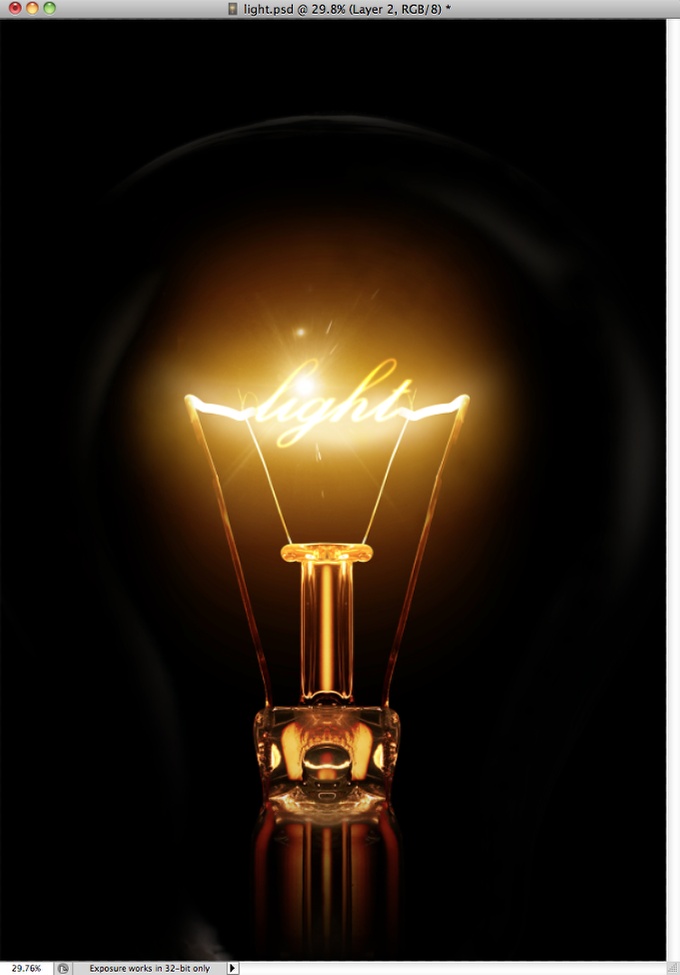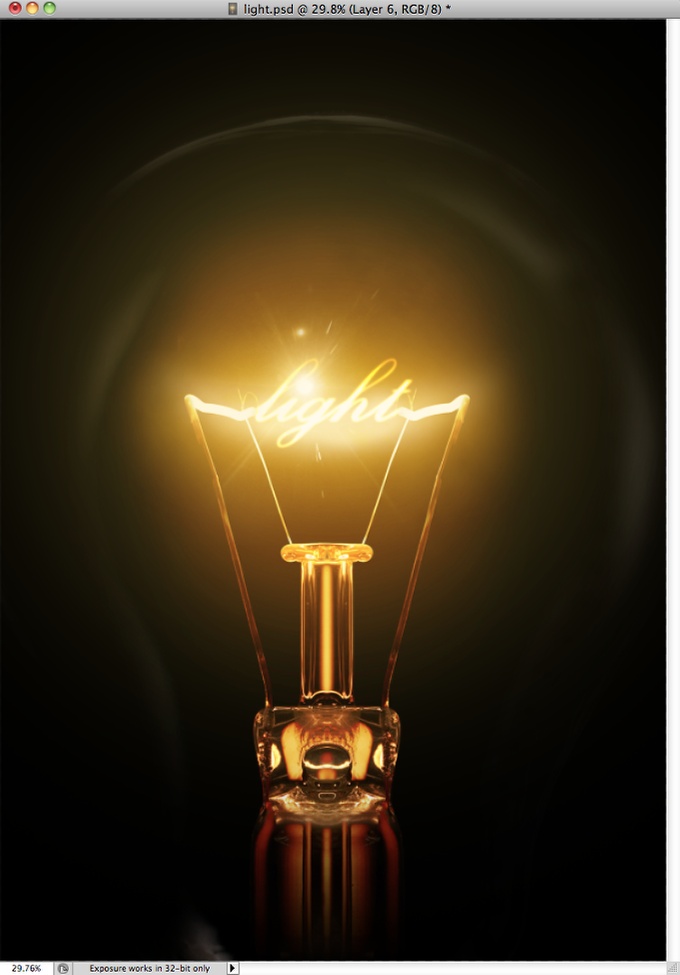Step 1
Open Photoshop and create a new document, after that make sure that the background is in black.
Step 2
To make the effect more realistic let's use a stock photo, the one I
am using is courtesy from Shutterstock and you can find it at
http://www.shutterstock.com/pic-24939406/stock-photo-glowing-lamp-on-bla.... Place the image in the center of the document but make sure that the filament area is big engouh.
Step 3
Go to Layer>Layer Mask>Reveal All. Then with the Brush Tool (B)
select a very soft brush (0% hardness0 and black for the color. Start
paiting the areas of the light you want to hide. Use the image below for
reference.
Step 4
Now let's delete the filament area where we will add the text with
the light effect later on. To do that is pretty easy, with the
Eyedropper Tool (I) select the color of the area you will paint, the
with the Brush Tool (B) and a very soft brush, start paiting over the
filament. Note: I added a new layer instead of painting over. Another
tip is if you are using the Brush Tool (B) you can just press Alt to use
the Eyedropper Tool.
Step 5
With the Horizontal Type Tool (T) add the word light in white. I am using Exmouth for the font, you can download it here
http://www.dafont.com/exmouth.font.
For the size I am using 82 pixels but the size will depend on your
document size. After that add a new folder in the Layers Palette and
change the Blend Mode of this folder to Color Dodge. Move the light text
into the folder you have just created.
Step 6
With the text selected go to Filter>Blur>Gaussian Blur. Use 4 pixels for the Radius.
Step 7
Because the white text is inside the folder with the Color Dodge, the
effect will be the same as if the text layer had a black background.
You can see that the edges get sort of blended with the background
creating a perfect light effect.
Step 8
Again to add more realism, instead of creating a lens flare in
Photoshop we will use a real photo. The one I am using I found in Google
Images and you can find it here
http://web.williams.edu/astronomy/IAU_eclipses/jmp_eclipse03_04.jpg.
Once you imported the photo the first thing to do is delete the areas
that you won't be necessary and keep just the flare. After that go to
Image>Adjustments>Desaturate.
Step 9
With the flare layer already desaturated, just change its Blend Mode
to Screen. Screen is a very useful Blend Mode because it turns what is
black into full trasparency the grey scale becomes a transparency level,
so it's perfect to create light effects.
Step 10
Add a new layer and go to Filter>Render>Clouds. Make sure you
had black and white for the background and foreground colors. This layer
also will be on top of the others.
Step 11
Change the clouds' layer Blend Mode to Color Dodge. After that add a
new folder in the Layers Panel and move the clouds layer into it. After
that change this folder's Blend Mode to Overlay.
Step 12
Add a new layer inside the folder in which you moved the clouds'
layer. Make sure that the new layer is beneath the clouds' layer. After
that with the Brush Tool (B) and a very soft brush with #f5d38b paint a
round spot in the center of the light effect. Change this layer's Blend
Mode to Overlay too.
Step 13
Now add another layer on top of all the others and then with the
Brush Tool (B) and a big and very soft brush using white for the color,
paint another big spot in the center of the light effect. After that go
to Layer>Layers Styles>Color Overlay. Use #ffd648 and Linear Burn.
The idea is to make the light a bit stronger.
After this we are done and as you could see, most of the light
effects are all about blending colors with photos. The Blend Modes in
Photoshop are very powerful for this type of effect and I would
recommend you to study more about them, especially the Color Dodge one.





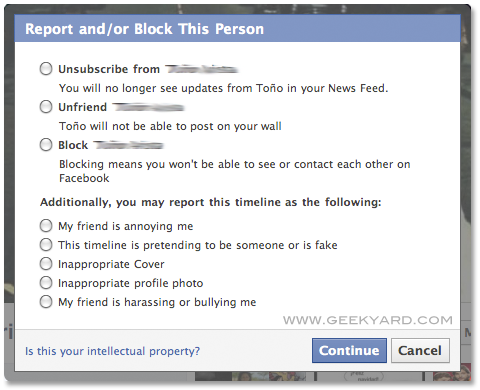
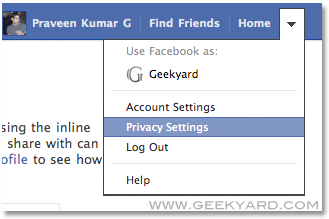

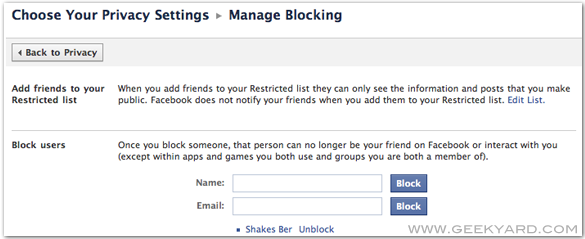



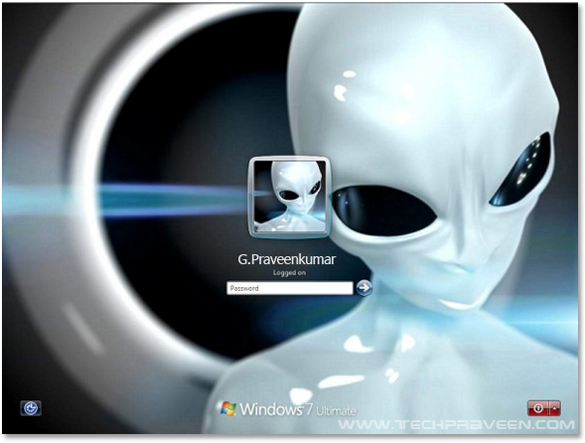
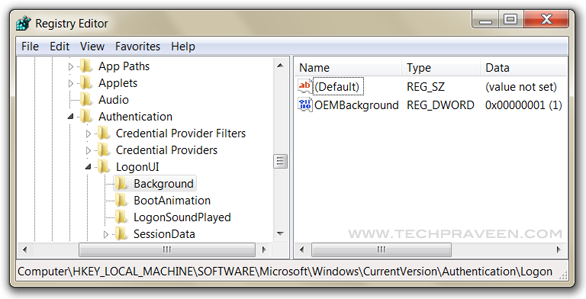


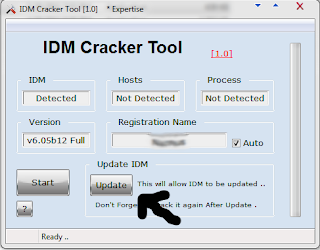
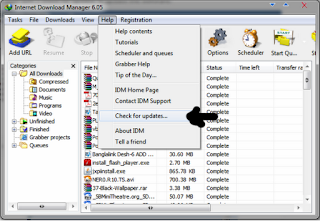

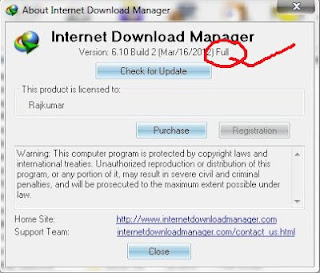




 ८. अब "Advanced key Settings..." मा क्लिक गर्नुहोस र तल पुछारमा हेर्नुहोस "Change key sequence..." मा क्लिक गरि नया pop up window खोल्नुहोस
८. अब "Advanced key Settings..." मा क्लिक गर्नुहोस र तल पुछारमा हेर्नुहोस "Change key sequence..." मा क्लिक गरि नया pop up window खोल्नुहोस



